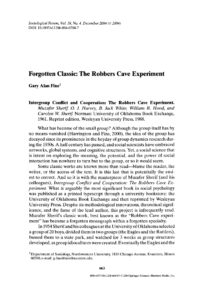Social Identity Theory (SIT), developed by Henri Tajfel and John Turner in the 1970s, explores the cognitive processes behind how individuals define their identities within social groups. It’s a fundamental theory in social psychology that helps explain intergroup behaviors, prejudices, and discrimination.
Core Tenets:
1. Categorization: SIT suggests that people categorize themselves and others into social groups, creating an “us vs. them” mentality. This categorization forms a part of one’s self-concept and social identity.
2. Social Comparison: Individuals strive to maintain a positive self-concept by comparing their in-group favorably with out-groups. This comparison bolsters self-esteem and enhances social identity.
3. In-Group Favoritism: People show preference and favoritism towards their in-group, as it contributes to a positive social identity, bolstering their self-esteem.
Processes in SIT:
1. Social Identity: It refers to the part of an individual’s self-concept that derives from their membership in social groups. For instance, someone may strongly identify themselves as a part of a religious, ethnic, or national group.
2. Cognitive Aspect: SIT emphasizes the cognitive processes involved in perceiving and categorizing oneself and others into various social groups, which influences behaviors and attitudes.
3. Intergroup Behavior: The theory explains intergroup behaviors, such as in-group favoritism and discrimination against out-groups. These behaviors are driven by the need to maintain a positive social identity.

Further References
1. Tajfel, H. (1978). Social categorization, social identity and social comparison . Differentiation between social groups: Studies in the social psychology of intergroup relations, 61(76), 293.
2. Tajfel, H., & Turner, J. C. (1979). An integrative theory of intergroup conflict . The social psychology of intergroup relations, 33(47), 74.
3. Turner, J. C., Hogg, M. A., Oakes, P. J., Reicher, S. D., & Wetherell, M. S. (1987). Rediscovering the social group: A self-categorization theory . Basil Blackwell.
SIT is crucial in understanding group dynamics, intergroup conflicts, and the basis of prejudices. It provides insights into how social identities are formed, how they influence behaviors and attitudes, and the implications for intergroup relations.






![Groupthink ea34b40d2dfc043ecd0b4401ef444f94eb6ae3d01db316439df9c67b_640[1]](https://cognitive-liberty.online/wp-content/uploads/ea34b40d2dfc043ecd0b4401ef444f94eb6ae3d01db316439df9c67b_6401-300x200.jpg)